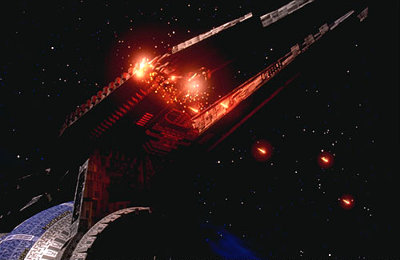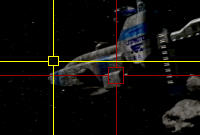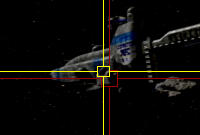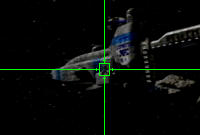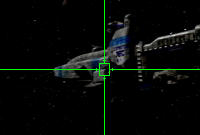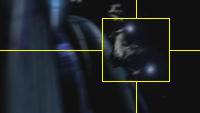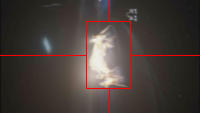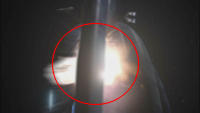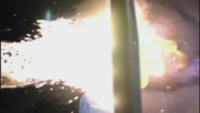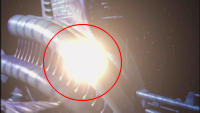![]()
|
||||
|
|
Armor
of the
Babylon Universe.
With few exceptions armor is the primary means of defense against enemy weapons. While some races do have energy shield technology, such as the Adabi, for most the science is simply not available or refined enough to offer enough protection from Terrawatt range weapons. Earthforce vessels primarily use metal alloys, ceramics and synthetic materials for their armor, as do the Narn and Centauri forces. Forces of the Minbari, along with a few others, use crystalline based armor while advanced races like the Vorlons use some form of organic armor. Earthforce armor is designed to allow for the highest resiliency possible against both energy weapons and kinetic impact. Against beam weapons, the armor featured on vessels such as the Omega class Destroyer has demonstrated thermal resistance of no less than 1.0*10^14. This was clearly illustrated when the EAS Alexander opened fire on the EAS Agrippa.* Similar resistance against plasma weapons within this magnitude was also seen when Babylon 5 opened fire on the Agrippa a few moments later. See "X-Ray / Particle Beam Laser" analysis, for details. Earthforce
armor has also demonstrated incredible resiliency to kinetic impact.
When the EAS Lexington was trapped in an asteroid belt following
the devastating attack of the infamous Minbari War-Cruiser "Black
Star", she was struck by several asteroids, one of which was
some 35 meters in length and incured no discernable damge.* Asteroid size, despite spinning, remained constant throughout the allotted time frame, thus we can assume that the asteroid was indeed moving parallel with the camera, thus providing us with a stable basis with which to judge distance and time traveled. As the maneuvering engine housing the asteroid strikes is no greater than 45 meters in height, we can use this figure along with image #2 to get an approximate length on the asteroid. Using the aforementioned as our basis for comparison, the asteroid's is roughly 34 meters in length. Dimensions for the asteroid given its spin before impact would be about 34/20/24 meters. As the asteroid appears to be made of stony iron, which has a density of 7,870 kg/m3, the asteroid that struck the Lexington would have had a mass of approximately 128,438,400 kg. This would make the momentum of the asteroid m*V=Mo, where the mass is 1.3*10^8 kg and the velocity is 145.83e m/s, Mo = 18,730,600,000 Upon impact the asteroid shatters into smaller fragments, three of them fairly large and easily visible to the naked eye, as seen in image #3. After these fragments bounce off and away from the Lexington, we have a clear picture of the impact zone, as shown in image #4. As you can see, there is NO visible damage - no signs of gashes, dents, cracks, or even a scratch. It is also interesting to note that, the impact of this asteroid actually pushed the powerless Lexington off course, to starboard.
Thus, the kinetic energy of the asteroid impact would have been 1.365*10^12 joules, equivalent to a 325 isoton bomb. Click HERE to view a short video clip. Please note that these figures do not take into account momentum of the Lexington. This information suggests that the armor used by Earthforce has a thermal tollerance in the range of no less than 1.0*10^14 joule and kinetic strength in excess of 1.4*10^12 joule. Similar physical properties should also be applicable to the warships of the Narn, Centauri and Leage worlds. We know
that Earthforce uses a material called plasteel in the construction
of their warships. We beleive that this plasteal is some kind of
alloy that is as light as plastic but strong as steal. Plasteel
was probably chosen as a key component in the construction of advanced
warships like the Excalibur due to Minbari crystaline armor having
a very low kinetic strength relative to plasteel, as shown below.
As the rear fin on the Minbari War-Cruiser is only an average of 20 meters in width, armor thickness in this area is only estimated to be less than one meter thick. Ke of Starfury impact is 2.4*10^8 joule and the energy release by auto-destructing the Starfury is estimated to be no greater than 6.13*10^12 joule. This estimate is based on the fuel capacity of the Starfury's two outboard fuel tanks, which have an estimated volume of 7068.6 cubic meters holding a total of 989,601.68 kg of gelled deuterium at density of 70 kg/m^3. We can also assume that much of the resulting explossion was caused not by the Starfury, but rather machinery and fuel running into the fin as it is one of the Minbari's primary gravitic engines. Given the information above, we can't really use this scene to acurately judge the kinetic strength of Minbari armor. While we can make an estimate, that estimate is most likely inacurate. Minbari poly-crystaline armor is probably very easy to cut and shape using physical tools like a saw blade, and very dificult to cut and shape using cutting lasers or a tortch. Earthforce armor on the other had, at least with regards to plasteel, is probably very easy to cut and shape using lasers and tourtches but very dificult to cut using a saw. We know of course that Earthforce also has access to materials with a very high thermal strength. This was illistrated by Mr. Garibaldi's comments in "Crysalis" where he stated that [plasma] coils inside PPGs were made a material known as a "morbidium alloy*" said to be stronger than diamond. This seems logical as PPGs would generate a great deal of heat and would need to be made of something capable of withstanding high thermal stress and dramatic changes in temperature. It is logical to assume that Earthforce uses multible layers of armor, each layer with a verrying degree of resilence to different weapons. This way, should a thermal weapon punch through one layer of armor designed to block kinetic weapons, it would be stoped by the next layer which is designed specifically to resist heat, while another layer still is more resistant to the massive ammounts of radiation that bombard a starship on a daily bassis. This being the case, it is this writer's opinion that Minbari poly-crystaline armor, while having a high thermal resistance and ability to refract away 80% of any directed energy weapon like a laser, it would appear to have a very low physical strength. Earthforce plasteel has a very high kinetic strength but low thermal strength. This is probably why vessels like the Excalibur are made of an interwoven mesh comprised of layers of these two armors, to provide the best of both worlds with regards to physical and thermal strength. In conclussion, Earthforce armor has a thermal tollerance of no less than 100 Terajoules and kinetic strength is greater than 1.4 Terajoules, possibly by as much as an order of magnitude. [*As
seen in "Severed Dreams."] |
|||||

